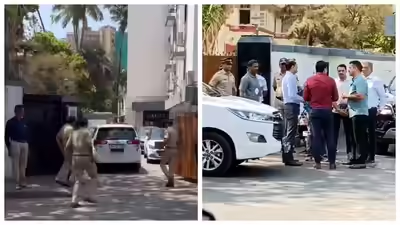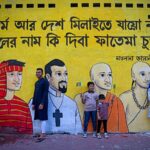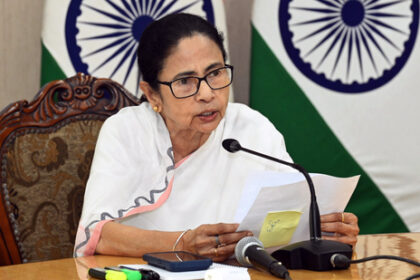Kapil Sharma Under Watch — The Escalation of Celebrity Security in Mumbai
In the early hours of July 2025, a noticeable shift occurred outside a quiet lane in Mumbai’s upscale Oshiwara locality. A small contingent of police personnel, usually stationed across high-traffic junctions or political offices, was redirected to a residential building that had never required such vigilance—until now. The residence in question belonged to one of India’s most beloved entertainers, Kapil Sharma. Known for his quick wit, mass popularity, and ability to bring the nation to laughter, Sharma had always maintained a relatively low-key personal life despite his immense public presence. But that week, the laughter took a pause. Unconfirmed security threats prompted the Mumbai Police to significantly increase their presence outside his home, triggering questions about the safety of public figures in India’s financial and entertainment capital.
According to early reports from police officials stationed in Andheri and Oshiwara divisions, the increased deployment was not in response to a singular incident, but rather an accumulation of safety concerns. These were reportedly tied to anonymous messages and vague threats received over the past few days through undisclosed digital channels. The nature of the threats remains confidential due to the sensitivity of the investigation, but officials have confirmed that they are treating the matter with utmost seriousness. The local police have coordinated with the crime branch and cyber cell to ensure all communication and digital evidence is examined thoroughly.
Kapil Sharma, whose contribution to Indian television spans over a decade and includes some of the most-watched comedy shows in the country’s broadcast history, has typically stayed away from controversy. Unlike many celebrities who frequently engage in politically charged commentary or confrontational interactions on social media, Sharma’s image has largely remained that of a universally liked performer. This makes the recent security escalation both surprising and concerning. It raises the larger issue of whether even non-controversial public figures are now vulnerable to targeted intimidation.
Mumbai, as a city, has had a complex relationship with the concept of celebrity security. From Shah Rukh Khan’s Mannat to Salman Khan’s Galaxy Apartments, high-profile personalities have long lived under varying degrees of state and private protection. The reasons have ranged from crowd management and stalking to threats from organized groups. The escalation at Kapil Sharma’s residence suggests that this circle of concern is expanding. With evolving digital threats, public figures are no longer shielded by their neutrality or mass appeal. A random post, a misconstrued joke, or even a rumor can turn into a security flashpoint.
For the Mumbai Police, the incident has become an operational case study in real-time protection. Security personnel have been instructed to maintain discreet but visible surveillance. The deployment includes both uniformed officers and plain-clothed personnel, with CCTV coverage enhanced and entry points to the residential block more tightly controlled. The goal, as one officer put it, is to “deter before reacting”—to prevent any untoward incident rather than merely respond to it.
Kapil Sharma himself has not made a public statement about the situation, and sources close to him suggest that he wishes to avoid media attention and allow the authorities to conduct their duties without interference. His family is safe, and he is continuing with his professional commitments under heightened logistical supervision. Those close to him believe that this will pass, but they also acknowledge that the sudden arrival of state protection has introduced a sobering reality into what was once a straightforward, successful, and largely unproblematic public life.

The Evolution of Celebrity Threat Perception in Mumbai
Mumbai has always been a city where fame meets frenzy. As the heart of India’s entertainment industry, it draws millions of admirers and thousands of aspiring stars—but it also cultivates a unique vulnerability for those who live in the limelight. The line between celebrity worship and public intrusion has often blurred. Kapil Sharma, now facing a sudden spike in police presence around his home, has become the latest case study in how celebrity status can evolve into a security liability—without warning and often without a clear source of provocation.
Historically, the threats to Bollywood figures and television personalities were more localized, involving overzealous fans, paparazzi confrontations, or the occasional political backlash. But over the past decade, the profile of risk has grown broader and more opaque. The digital revolution has enabled anonymous intimidation, coordinated trolling, and even targeted extortion attempts—often conducted from thousands of miles away. This shift has complicated the role of law enforcement, which now must evaluate not only physical security breaches but also assess the credibility of threats in cyberspace.
In Kapil Sharma’s case, the Mumbai Police have not revealed the precise nature of the threat, but senior officers have confirmed the activation of the cybercrime unit to trace origins of suspicious communication. That alone suggests the perceived risk is not merely physical but digital in nature—perhaps involving email, encrypted messaging platforms, or IP-cloaked threats. These cases are notoriously difficult to trace in real time, yet the authorities’ decision to escalate security to a visible degree indicates they’re taking no chances.
What makes this situation unique is that Sharma, unlike some other high-profile celebrities, has never courted controversy. He is not known for political commentary or ideological provocation. His appeal is pan-Indian, cutting across class, language, and religious lines. That he too can become a security target highlights the rising unpredictability of public threats, where celebrity status itself is enough to trigger attention—positive or otherwise.
Patterns from the Past — When Fame Invited Danger
While the sudden deployment of police outside Kapil Sharma’s home has taken many by surprise, it fits a broader pattern seen in Mumbai over the years. The city’s elite—actors, directors, producers, and now even YouTubers and influencers—have all, at some point, found themselves facing threats that go beyond the flashing lights of adoration.
There have been numerous high-profile incidents over the years. Shah Rukh Khan has lived with tight security for decades due to both political controversy and the sheer scale of his stardom. Salman Khan’s threats from gang-linked sources were not only publicized but even resulted in legal action and long-term protection details. Deepika Padukone faced a national-scale backlash during the “Padmaavat” controversy, prompting the government to intervene with round-the-clock security. Comedians like Munawar Faruqui have also had to navigate threats, legal troubles, and public abuse—all for content that some deem controversial.
Kapil Sharma, however, is different. His rise from humble roots in Punjab to becoming a television icon has made him one of the few entertainers with both mass affection and industry respect. He has kept his personal opinions largely private, focused on family, comedy, and his work. That someone like him now requires police surveillance is indicative of a larger shift: the growing intolerance, unpredictability, and weaponization of public attention. In this climate, no one is off-limits—not even the smiling face of Indian prime-time comedy.
What’s also different today is the scale of public access. Fans (or antagonists) can reach celebrities not only outside homes or studios but directly through comment sections, emails, DMs, and digitally altered narratives. A single meme, a clipped video, or a fake tweet can trigger an avalanche of backlash, some of which escalates into physical threats. That is the reality Mumbai’s police force now confronts—a blend of real-world surveillance and digital diagnostics, all aimed at shielding personalities who may not even know they’re in danger.
The Police Perspective — Deterrence Through Visibility
Behind every security deployment is a philosophy. For the Mumbai Police, the decision to increase patrols and static surveillance outside Kapil Sharma’s Oshiwara residence was not only about reacting to a threat—it was also about sending a message. High-visibility deterrence has become an increasingly preferred tactic, especially when there is no conclusive threat assessment but enough concern to justify pre-emptive caution.
When questioned by local reporters, a senior police official stated off the record that “in today’s ecosystem, visibility is protection. We’re not just shielding a person—we’re discouraging an act.” That sentiment reveals much about the modern security approach in high-profile cases. For celebrities, the mere presence of police officers at their gates can discourage opportunistic mischief, signal institutional backing, and lower the chances of a headline-making breach.
At Kapil Sharma’s residence, the presence includes plainclothes officers interspersed with uniformed patrols, strategically placed near entry and exit points. CCTV feeds have been integrated with local police monitoring networks. Visitors are being discreetly screened. This is not martial law—it’s layered, calm, and careful. The goal isn’t to alarm the public or Sharma’s family but to ensure that if someone intends harm, they know in advance: there are consequences, and they’re immediate.
One of the reasons the Mumbai Police continues to command relative trust in such matters is their ability to act without drama. In contrast to the often-chaotic scenes that follow celebrity controversies—flashing cameras, political statements, trending hashtags—this time, the action preceded the attention. The police acted before a story broke, which is rare and reassuring. It shows that their intelligence networks are not only active but predictive.
Kapil Sharma, for his part, has remained silent. His team has refrained from public statements, choosing instead to focus on routines, recordings, and family life. That professionalism, paired with the government’s calm response, is a portrait of crisis handled—not denied or dramatized.
The Broader Implications — A Fragile Fame in the Digital Age
Kapil Sharma’s situation reveals a deepening truth about public life in the 21st century: fame is no longer a shield. It is a magnifier. It amplifies admiration, but also resentment. It brings applause, but sometimes invites danger. In a world of constant access, hypervisibility, and unchecked narratives, celebrities—even those with apolitical, humorous, or entirely entertainment-driven careers—can find themselves in harm’s way.
The psychology of modern threats is evolving. They are no longer always ideological or financial. Some stem from pure attention-seeking behavior. Others are born out of digital delusions, conspiracies, or parasocial fixations. The public figure becomes a character in someone else’s narrative, a symbol of something they love, hate, or want to influence. That’s what makes modern security so complex. The threat doesn’t always have a rational pattern. It’s emotional, unpredictable, and sometimes impulsive.
For law enforcement agencies like the Mumbai Police, this means updating training, investing in cyber forensics, and forming rapid-response frameworks that go beyond physical barricades. Protecting a public figure now means monitoring keywords, detecting suspicious follower behavior, and even scanning dark web activity. The traditional model—guns, guards, gates—is no longer enough. Today, the battlefield is both physical and virtual.
As this story unfolds, Kapil Sharma’s case will remain a focal point—not because of the threat itself, but because of the response it triggered. In protecting him, the state also protects an idea: that public life in India can still be joyful, still be creative, and still be safe. That an entertainer need not live in fear. That Mumbai, despite its scale, can still act with intimacy.
The next sections will explore how India’s entertainment industry is quietly adapting to this environment of quiet threat—from hiring private security teams to investing in legal surveillance—and how the price of fame is increasingly paid in emotional resilience and constant vigilance.
The Entertainment Industry Reacts — Security Becomes Standard
In the wake of the increased police deployment outside Kapil Sharma’s residence, murmurs of concern began to circulate through Mumbai’s entertainment industry. Agents, studio executives, showrunners, and even rival comedians quietly acknowledged what was once a rarely discussed reality: that the cost of public visibility now includes managing real and perceived threats. Within days, security consultants across Mumbai and Delhi began receiving queries from other television and film personalities—many of them not involved in controversial content—seeking risk assessments and private protection options.
This shift toward enhanced caution is not new, but Kapil Sharma’s case brought it into the mainstream of industry conversation. If someone as widely loved and non-political as Sharma could face such a scenario, then no one was truly safe. The traditional view that controversy attracts danger no longer holds; instead, it is visibility itself that draws unpredictable responses.
Production houses too have taken notice. A few, according to industry insiders, have started quietly re-evaluating security protocols on sets, especially for large-scale TV shows and live recordings. The idea is to maintain a balance between fan accessibility and crew safety. For Sharma’s own production team, sources suggest that all staff members were privately instructed to avoid discussing the situation and to remain professional amid increased surveillance. The message was clear: don’t panic, but don’t take it lightly.
In a way, the entertainment ecosystem is going through a silent evolution—where personal security is no longer seen as indulgence, but as insurance. More and more actors and television personalities, particularly those with large online followings, are beginning to understand that a social media comment, a joke, or even a misunderstood interaction can spiral quickly in today’s emotionally reactive climate. In that environment, being cautious isn’t being paranoid—it’s being prepared.
The Rise of Digital Threats — A New Age of Invisible Enemies
Behind the scenes of every celebrity’s life today is a digital war room—whether formally organized or informally managed. Anonymous messages, bot-generated hate, deepfake videos, and targeted campaigns are no longer exceptional; they are common. What began as trolling has matured into a darker, more complex network of digital intimidation. Kapil Sharma’s case, while not officially confirmed to be digitally rooted, aligns with this larger trend: the invisible enemy operating in plain sight.
The digital realm allows threats to be issued, spread, and amplified without accountability. A fake account can incite violence. A screenshot out of context can trend overnight. And a small group of anonymous users can simulate a storm of public outrage. This creates both a psychological toll and a security risk. It’s not just about what happens online—it’s about what it provokes offline.
Law enforcement agencies in India have only recently begun allocating greater resources toward digital threat analysis. While cybercrime units exist in major cities, they often lack the real-time investigative tools available in developed countries. Moreover, the legal framework for punishing digital harassment, especially when directed at public figures, remains insufficient. This gap is being exploited by those who wish to disrupt or intimidate without leaving a trace.
Kapil Sharma’s silence amid the ongoing investigation speaks volumes. It reflects both discipline and caution. But for other celebrities watching the situation unfold, it’s a warning. If the threat is digital, it can arrive without warning, escalate rapidly, and be hard to trace. That’s what makes it dangerous. And that’s why protecting celebrities in 2025 requires not just bodyguards—but firewalls.
Public Sentiment — When Fans Become a Shield
One of the more heartening aspects of the situation has been the overwhelming support Kapil Sharma has received from his audience. As soon as news of the increased security broke, fans across social media rallied around the comedian with messages of solidarity. Hashtags like #StaySafeKapil and #WeSupportKapil trended on Twitter and Instagram. Fans recalled their favorite jokes, shared clips from “The Kapil Sharma Show,” and expressed anger that someone so beloved could be threatened.
This public reaction is more than just digital noise. In a time where social media often fuels cancel culture or toxic outrage, the same platforms were used to protect and support. In a real way, Kapil Sharma’s fans became part of his security ecosystem—not through confrontation, but through presence. Their consistent messaging helped shift the narrative from vulnerability to support. It reminded observers that Sharma isn’t just a celebrity—he’s a cultural fixture, a source of joy for millions.
This outpouring also acted as a deterrent. Whoever had intended to intimidate or unsettle Sharma saw a nation of fans closing ranks around him. That kind of collective digital energy matters. In the absence of a clear antagonist or motive, public sentiment can play a powerful role in shaping the response. It can discourage copycats, embolden authorities, and even provide moral support to those targeted.
More broadly, it reflects something deeper: India still cherishes its entertainers. Despite political divides and cultural debates, the country rallies around its artists when they are under threat. This emotional equity is rare—and it’s something no threat, however anonymous, can easily destroy.
Cultural Commentary — Comedy as a Soft Target
One of the most under-discussed themes to emerge from this incident is the vulnerability of comedians in today’s socio-political climate. Comedy, by nature, pokes, prods, and exaggerates. But in the current atmosphere—where offense is often manufactured or magnified—comedians find themselves constantly at risk. While Kapil Sharma has rarely engaged in political humor or polarizing commentary, the reality is that today, even neutrality can be controversial.
Comedy is now seen by some as a form of commentary—and thus, a threat. Comedians are expected to walk a razor-thin line between humor and sensitivity. A misplaced line, a dated reference, or even a misunderstood joke can trigger backlash. This reality makes them easy targets for both digital mobs and real-world intimidation. That Sharma—a comedian known for family-friendly content—is now under heightened protection underscores how the genre itself is under siege.
This development prompts a larger cultural question: are we still a society that can laugh at itself? Or have we reached a point where every joke is a risk analysis? The answer may lie in how this situation is remembered. If Sharma’s experience becomes a turning point for stronger protection and greater empathy for entertainers, it may restore comedy’s space as a safe zone. But if it becomes a precedent for silence and self-censorship, it could permanently damage India’s comedic tradition.
Moving Forward — Security, Speech, and the Right to Entertain
As the dust begins to settle around Kapil Sharma’s Oshiwara residence, one truth remains unchanged: he is still showing up. Still taping episodes. Still cracking jokes. Still playing host to India’s laughter. And that, perhaps, is the greatest act of defiance—not words, but presence. Not statements, but consistency.
But the incident has changed things. For Sharma, it has introduced a new layer of vigilance. For the police, it has provided a case study in preemptive protection. For the industry, it has sparked overdue conversations about personal safety. And for the public, it has revealed how thin the boundary is between love and threat.
In the coming weeks, investigations will continue. Police will pursue digital leads. Sharma’s team will evaluate private security options. And the public will gradually move on to the next headline. But what must not be forgotten is the lesson: fame, today, needs a fortress—not because it asks for trouble, but because trouble can arrive without invitation.
As India grapples with evolving threats—both online and off—the balance between freedom of expression and personal safety will define the next decade of entertainment. Kapil Sharma’s experience is not just a one-off incident. It is a mirror to where we are, and a signal of what we must address.
Also Read : From Beats to Walls: How Rap, Memes, and Graffiti Are Driving Political Change in Bangladesh








